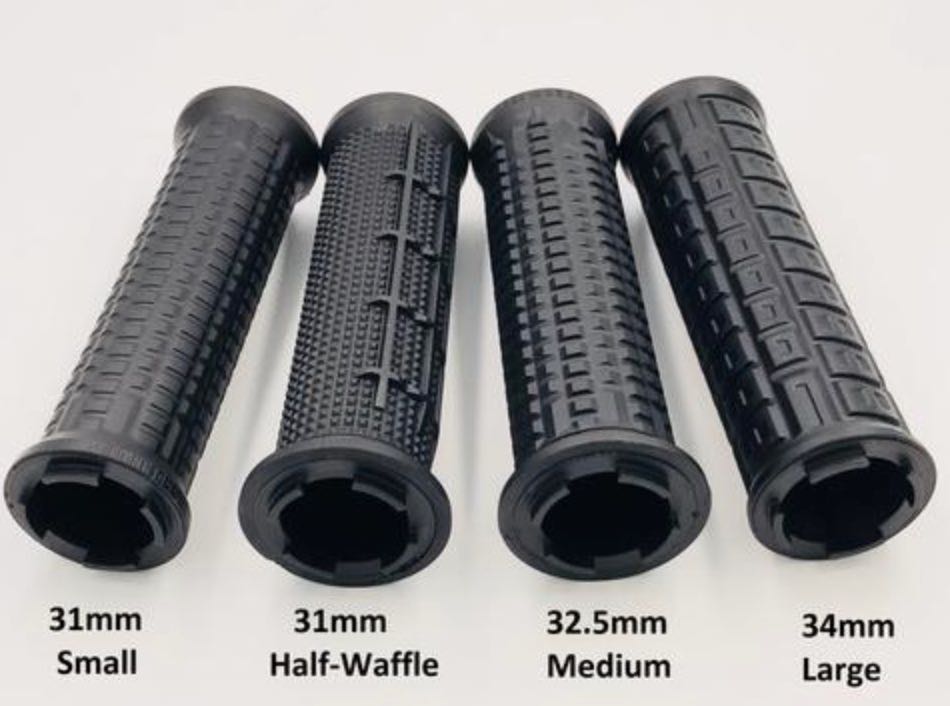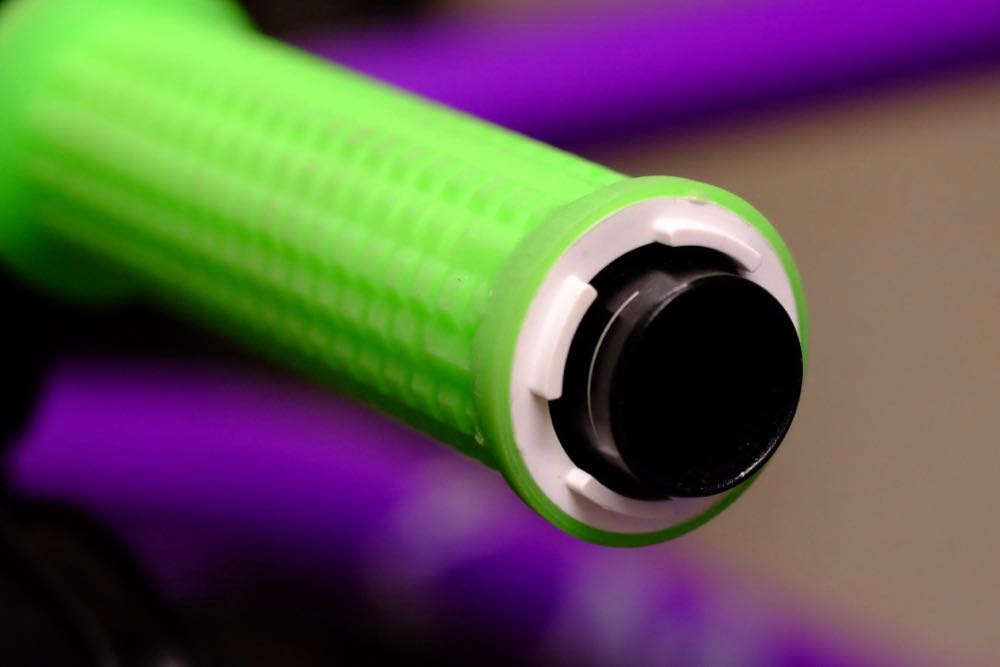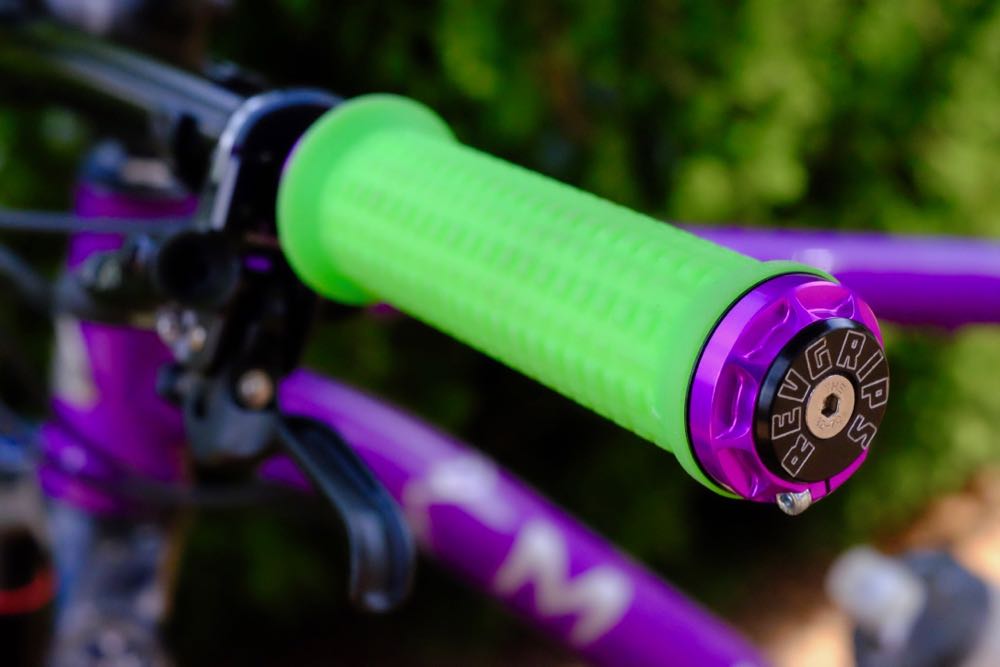When they were released a couple of years ago, Revolution Suspension Grips made quite a splash. The real head-turner was the idea of suspension in a grip, but the $115 MSRP raised a few eyebrows as well.
In the time since, they have expanded their offering and reduced the entry point to a more approachable $60 for the base model. Available in a wide range of mix-and-match colors, three diameters, and different grip patterns, it’s now a very customizable system.

Does it work? Is suspension the right word?
As the owner of a cranky elbow, I was interested to see if RevGrips could offer any relief. I’m a couple hundred miles into my evaluation. If I was a skeptic before, I’m less so now.
I’m not sure if it’s false advertising or savvy marketing, but calling RevGrips suspension of any kind is a bit of a stretch. That’s not to say it isn’t a smart design. I might be a bit hung up on the billing, but I would describe the technology as “active damping,” or perhaps “energy absorbing.” The word “suspension” implies a degree of travel you just can’t fit in a grip. I know, I’m being pedantic about word choice, but “suspension” gives the grip a lot of hype to live up to.
What is it?

The RevGrip is a multi-piece system with a grip-sleeve anchored to a pair of locking bar clamps. That’s nothing unusual save for the fact the sleeve is spaced off the bar. It’s also joined to the locking clamps with eight tabs plugged into rubber inserts. The void below the grip insulates the rider’s hand from bar vibrations, and the rotation in the grip reduces a small degree of impact energy.
Most of us would assume a loosey-goosey grip would be a bad thing, and it usually is. I think much of that has to do with the fact that a loose grip typically twists without predictable limits. In that regard, the RevGrip is different. It rotates with a defined range of movement with consistent resistance. That helps amplify a sense of control even with the grip in motion.
For my test, I chose the top-tier Pro Series grip in the medium 32.5mm diameter. Priced now at $90 it’s still not cheap, but the kit comes with machined clamps, installation wrenches, and an assortment of rubber suspension inserts and washers to fine-tune the grip movement to your liking.
Tuning

As simple as it is in concept, the RevGrip is actually a complex gizmo. Each clamp houses four rubber inserts. There are two types of inserts available, both made of the same rubber. The difference in shock-absorbing qualities has to do with the actual shaping of the insert. The thin washers are applied between the grip and clamps to further adjust the movement of the grip sleeve. It takes a little experimenting to get the ideal degree of rotation, but it’s not difficult.
Ride feel

During my first few rides, I had the grips fitted to a firm setting. As I expected, I noticed some mild attenuation of vibration due to the gap between the bar and grip sleeve, but it felt like any other grip. After swapping out the inserts and washers to the softest setup, I hit the trail again. It was a little weird.
I admit it took several rides to become accustomed to the sensation of a slippy-grip. What I found most interesting was how I could relax my hand tension while still feeling well-connected to the bar. That in itself helped reduce hand fatigue.
Initially, I found some of the movement unnerving, particularly under hard braking or while rolling off big drops. After a few rides I learned to predict the rotation and the sensation of a twisting grip felt more natural, even kind of nice.
Is it Snake Oil?
I’m no different from many consumers and somewhat expect products with lofty claims to fall short. Maybe I got fixated on the suspension call-out, but I didn’t think I’d like RevGrips as much as I do. I eventually settled on a setting on the lighter side of soft with more rotation than I thought I would like. I definitely notice less hand fatigue on long rides but have not noticed any drawbacks to the extra grip movement. My elbow still aches after a full day, but I certainly didn’t expect a $90 bike grip to remedy a joint made sore from 30 years of abuse.
It’s a big spend, even at $60, but after a few weeks of daily use I don’t see any drawbacks to giving them a try. If you suffer any type of hand, wrist, or elbow pain I would recommend giving them a shot. The more I ride with them, the more I like them.
Zach’s Take
I’ve also had a set of the Rev Grips for some time with the medium grip profile. Running the most middle of the road set up, much of my experience echoes Christophe’s. What struck me most about the grips is how much they encourage a light touch to the bars. This in turn reduces hand fatigue when you’re riding the Rev Grips, but it seems to translate to other grips as well. They’re almost as much of a training aid as they are a pair of grips you could use every day. After riding them for some time, I found myself riding lighter on other grips and having less hand fatigue across the board. For that reason, I like them a lot and even though I’m not currently riding them on any of my bikes, I feel like I’m still reaping the benefits.
